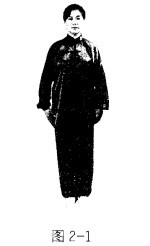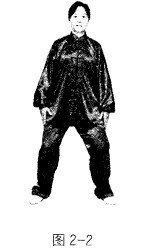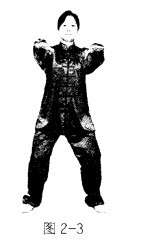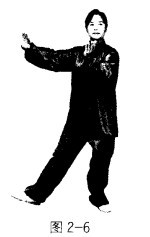74式太極拳圖解教學1至29式
2025-07-31 22:37:09
陳氏太極拳老架一路圖解教學,歡迎收藏和轉載
Chapter 2 Chen Style Taiji Quan Old Frame First Routine
老架一路特點是:以柔為主,由松人柔,柔中寓剛;行氣運勁,以纏絲勁的鍛鍊為主,發勁為輔。初期動作力求緩徐,以揣摩行氣運勁,全身內外,一動全動,使能處處保持平衡而不失其勢,練成隨遇平衡的技能。纏絲勁是粘化、牽動、進逼的核心,纏繞圓轉,功深後能達到即化即打,依著何處便從何處擊去的程度。發勁的運用,原則上是沒有牽動則不發。纏絲勁的鍛鍊,能逐漸產生一種似柔非柔,似剛非剛,極為沉穩而又靈活善變的內勁。陳鑫曾說: 「一舉動,輕重、剛柔俱發。」可以說,陳氏太極拳特點是:以纏絲勁為靈魂,以內勁為統馭。這也是太極拳推手時具有威懾力量的基本條件。
The features of「Chen Style Taiji Quan Old Fame First Rou-tine」are mainly softness, from relaxation to softness, and hard-ness residing softness. Use Twisting Jin to deliver Qi and Jin as Primary movements, and issue Jin as secondary movements. At the beginning, try to be slow, and feel the process of the deliv-www.cntaijiquan.com taijiquan ering of Qi and Jin. No matter inside or outside of the body,when one part moves, the other parts follow. Keep balance at any time and do not lose power. Twisting Jin is the core of sticking,leading, and approaching. Twisting and moving in a circle give you the skill to lead the enemy' s power away and strike him bac.k, or to follow his power and find a chance to strike him. In principle, there is no leading, then there is no striking. With Twisting Jin, you can gain the power which seems soft, but is not soft, seems hard, but is not hard, stable and flexible to change. Mr. Xin Chen said,"Every movement is with lightness and heaviness, softness and hardness."In general, Chen Style Taiji Quan uses Twisting Jin as a soul and uses internal power as a commander. That is why it is powerful in Pushing Hands.
第一式起式
1.兩腳並立,身體中正,兩眼平視,舌尖頂住上顎,唇齒微合,下頜微內收;兩臂自然下垂身體兩側,兩肘尖略有外掤之意,手心向裡,呼吸自然(圖2-1)。
1.Opening
(1) Stand up with feet together, body upright, eyes looking forwar, Close the mouth naturally; draw the chin in slightly.
Arms are hanging naturally. Push both elbows out slightly, palms facing in. Breathe naturally (Figure 2-1).
2.上式不停,身體慢慢下沉,屈膝松胯,重心移向右腿,左腳跟抬起向左橫開半步,與肩同寬,腳尖微向外,重心移向中間,兩腳指抓地,腳心要虛,全身放鬆,含胸塌腰,氣沉丹田,意識集中(圖2-2)。



(2) Continuing the last movement, sink the body slowly,bend the knees and relax the hips. Shift the weight towards the right leg; raise the left heel and take a half-step to the left, feet apart at shoulders width, toes pointing slightly outward. Shift the weight towards the centre, toes gripping the ground, feet arched, body relaxed. Draw the chest in and relax the hips. Sink the ener- gy to Dan Tian (the lower ab-
domen); mind lS concentrated (Figure 2-2).
3.上式不停,兩掌逆纏緩緩抬起,與肩同寬、同高。同時,身體是隨兩掌上升而下沉(圖2-3)。
(3) Continuing the last movement, palms twist inward and slowly lift to shoulder height,shoulder -width apart. Sink the body while the palms are moving up (Figure 2-3).
4。上式不停,松肩、墜肘,屈膝松胯,身體繼續下沉。兩掌隨身下沉,落於腹前,掌心朝下。目視前方(圖2-4)。
(4) Continuing the last movement, relax shoulders and sink the elbows, bending knees while relaxing the hips. Continue to lower the body, palms following the body to fall in front of the abdomen, palms facing down, eyes looking forward (Figure 2-4).
要點
虛領頂勁,含胸塌腰泛臀,沉肩墜肘,屈膝松胯,膝不過腳尖,立身中正,心靜體松,意識集中,心氣下降,呼吸自然。
Requirements
Head should be drawn up, chin slightly tucked in. Cave the chest slightly inward; sink the waist. Sink the elbows and shoulders. Push the coccyx slightly ( taijiquian)backwarcl. Bend the knees and relax the hips. Do not push the knees farther than the toes; keep the body upright, mincl calm and focused, body relaxed. Breathe natu rally.
誤區
對於初學拳者,很容易犯有前俯後仰、身法不正的毛病。
警示
應注意,松胯在於塌腰,而塌腰必須松胯。松胯時不宜過,大腿根凹進去過了,就會前俯,大腿根沒凹進去向前繃、挺,就會後仰,這樣,腰勁就難以靈活運轉。因此塌腰、松胯時就像坐凳子一樣,放鬆下沉。以上要領在每個動作中都應涉及。
Avoid
Bowing forward or leaning backward.
Caution
Sink the waist and relax the hips at the same time. Do not overdo the relaxing of the hips. Bending forward or leaning back would cause the waist to be inflexible. Therefore, sink the waist
and relax the hips as if sitting on a stool. This applies to all movements.
[NextPage]
第二式金剛搗碓
1.接上式,身體微右轉下沉,再向左轉,重心移向右腿。兩掌左逆右順纏,上擁至左上方,左掌心朝外斜下方,右掌掤至胸中線、掌心朝上。目視左前方(圖2-5)。

2. Warrior Pounds the Mortar
(1) Continuing the previous movement, turn the upper body slightly to the right and lower it.Then turn the upper body to the left, shifting the weight onto the right leg. The left palm twists inward to the upper left of the body, palm facing outward and downward; the right hand twists outward to the centre of the chest, facing upward. Eyes look to the left front (Figure 2-5).
2。上式不停,身體下沉向右轉,重心由右移向左腿,外擺右腳尖向右斜前方。兩掌左順右逆,坐腕,隨身旋轉向右側,劃弧變捋,與肩同高、同寬,右掌心朝外斜下方,左掌心朝右斜上方,兩掌指尖朝左前方(圖2-6)。
(2) Sink the body and turn the upper body to the right,,hifting the weight onto the left leg, and swing the toes of the right foot outward to point to the right front. The left palm twists outward; the right hand twists inward. Push both wrists down and all the fingers point up (It is also called "sitting hand"). Both hands draw an arc and pull up to shoulder
